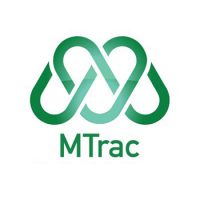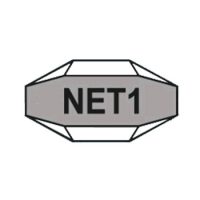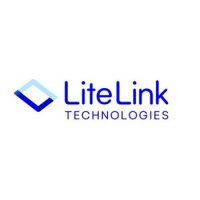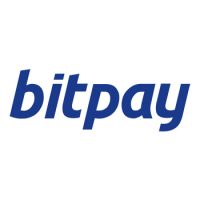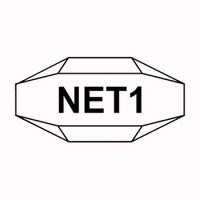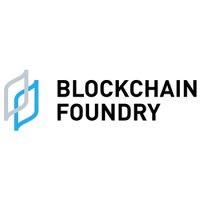Blockchain Press Releases
Digital Identity Solutions Market worth $83.2 billion by 2028 – Exclusive Report by MarketsandMarkets™
CHICAGO, July 10, 2023 /PRNewswire/ — Greater industry adoption, technology advancements like blockchain and biometrics, as well as a focus on privacy and legal compliance will all contribute to the market for digital identity solutions having a bright future. In deciding the growth and influence of the market, cooperation and interoperability will be crucial.
The global Digital Identity Solutions Market size is projected to grow from USD 34.5 billion in 2023 to USD 83.2 billion by 2028 at a Compound Annual Growth Rate (CAGR) of 19.3% during the forecast period, according to a new report by MarketsandMarkets™. The rise in identity and authentication fraud and increased integration of AI, ML, and blockchain to enhance digital identities drives the growth of the DIS market. Moreover, the high cost associated with the deployment of digital identity solutions may hinder market growth.
Browse in-depth TOC on “Digital Identity Solutions Market“
458 – Tables
48 – Figures
344 – Pages
Download PDF Brochure @ https://www.marketsandmarkets.com/pdfdownloadNew.asp?id=247527694
Scope of the Report
|
Report Metrics |
Details |
|
Market size available for years |
2017-2028 |
|
Base year considered |
2022 |
|
Forecast period |
2023–2028 |
|
Forecast units |
Value (USD Million/USD Billion) |
|
Segments Covered |
offering, solution type, identity type, organization size, verticals, and regions |
|
Geographies covered |
North America, Europe, Asia Pacific, Middle East & Africa, and Latin America |
|
Companies covered |
Major vendors in the global DIS market include NEC (Japan), Samsung SDS (South Korea), Thales (France), Telus (Canada), IDEMIA (France), GBG (UK), Tessi (France), Daon (US), ForgeRock (US), ImageWare (US), Jumio (US), iProovns. They have a vast workforce and associated networking devices susceptible to identity-related risks. Organizations have offices across regions, forcing them to provide their solution through real-time data acces(UK), ID R&D (US), Refinitiv (UK), OneSpan (US), Smartmatic (UK), Freja EID Group (Sweden), Vintegris (Spain), AU10TIX (Israel), Signicat (Norway), Duo Security (US), Syntizen (India), Hashcash Consultant (US), Good Digital Identity (Czech Republic) |
Based on the organization size, the large enterprises segment is expected to hold the largest market share during the forecasted period.
The adoption of digital identity solutions is driven by enhanced security needs for secure authentication and access control in large enterprises. Large enterprises were the early adopters of digital identity solutios to their employees. Additionally, there are no budget constraints in large organizations; therefore, these organizations can adopt the on-premises-based digital identity solution. Organizations are increasingly enhancing their businesses’ productivity across regions by adopting digital identity solutions. Additionally, the solution can detect access risk, excess risk, and risk outliers. Hence, large enterprises are expected to increasingly adopt digital identity solutions that comply with various standards and regulations.
By identity type, the biometric segment to hold a larger market size during the forecast period
The need for biometric solutions is driven by the demand for a seamless experience for the customer. Digital identity solutions traditionally evolved from passwords to biometric authentication, such as fingerprint, facial recognition, retina or eye scan, handprint, and voice recognition. Lock and capture mechanisms are followed by biometric solutions to authenticate the individuals and enable access to a specific set of services. Compared to conventional keys (or keycards) and password systems, biometric solutions are more secure. These solutions also use multi-factor authentication to add an extra layer of protection. Increasing demand for digital identity solutions, identity authentication, ID verification, and others, including compliance management and fraud prevention, is driving the growth of the biometric solutions segment.
Request Sample Pages @ https://www.marketsandmarkets.com/requestsampleNew.asp?id=247527694
By region, Asia Pacific is to grow at the highest CAGR during the forecast period.
Asia Pacific includes big developing economies, such as Australia, China, Japan, India, Singapore, and South Korea. With the increase in technological innovations, the Digital Identity Solutions Market is witnessing high growth opportunities in this region. Developing countries, such as India, use digital identities to authenticate their citizens, whereas developed countries use digital identities for more advanced applications, including accessing government services and identification. Various vendors are trying to fulfill the demand for digital identity in the Asia Pacific. For example, ForgeRock, a global digital identification provider, continues its development throughout Asia and the local availability of its ForgeRock identification Cloud from two additional data centers in Hong Kong and Indonesia. With this expansion, ForgeRock’s Identity cloud is now available in 17 countries globally. Such expansions are strengthening the growth of digital identity solutions in the Asia Pacific.
The widespread technology implementation across verticals, such as BFSI, retail and eCommerce, and healthcare, in terms of mobility and cloud computing, has led to the increase in customer base and internet users, compliance regulations, and mobile usage, eventually leading to the need to deploy digital identity solutions.
Top Key Companies in Digital Identity Solutions Market:
NEC (Japan), Samsung SDS (South Korea), Thales (France), Telus (Canada), IDEMIA (France), GBG (UK), Tessi (France), Daon (US), ForgeRock (US), ImageWare (US), Jumio (US), iProov (UK), ID R&D (US), Refinitiv (UK), OneSpan (US), Smartmatic (UK), Freja EID Group (Sweden), Vintegris (Spain), AU10TIX (Israel), Signicat (Norway), Duo Security (US), Syntizen (India), Hashcash Consultant (US), Good Digital Identity (Czech Republic) are the key players and other players in the DIS market.
Recent Developments
- In May 2023, iProov partnered with Wultra to provide iProov’s biometric solutions suite as part of its portfolio of digital banking solutions.
- In March 2023, Thales announced a partnership with the Finnish police. The National Police Board of Finland is planning to launch new biometric travel and digital ID documents.
- In November 2022, ForgeRock launched a cloud-native digital identity governance solution. The new ForgeRock Identity Governance increases enterprise efficiency by combining its digital identity and access management platform.
- In November 2022, NEC launched a touchless, multimodal biometric authentication terminal. This terminal integrates face recognition technology with iris recognition technology to provide high levels of authentication.
- In November 2022, GoTyme Bank partnered with Daon. GoTyme Bank will utilize Daon’s IdentityX platform to enable digital identity capture and authentication in its mobile app.
Inquiry Before Buying @ https://www.marketsandmarkets.com/Enquiry_Before_BuyingNew.asp?id=247527694
Digital Identity Solutions Market Advantages:
- User experiences can be made simple and convenient by using digital identity solutions. Users no longer need to remember several usernames and passwords in order to access multiple online services and applications because they only require one set of credentials. Productivity rises and user happiness is increased by this seamless experience.
- Strict regulatory requirements involving identity verification and data protection apply to a variety of industries, including finance, healthcare, and government. Digital identification solutions help organisations comply with these rules by putting in place strong security measures and offering audit trails and reporting capabilities.
- Privacy-enhancing technologies are used to prioritise user privacy in digital identification systems. To safeguard user data, they frequently use strategies like pseudonymization, encryption, and anonymization. The danger of data breaches and unauthorised data use is lower since users have more control over the personal information they exchange with different service providers.
- Organisations may save money by using digital identity solutions. They lessen the need for conventional, tangible identification documents that can be expensive to acquire and verify, including passports and driver’s licences. Digital identification systems also automate a number of identity-related tasks, lowering operating expenses and manual labour.
- Fighting identity fraud and online scams requires the use of digital identity solutions. In order to safeguard people and organisations from unauthorised access and impersonation attacks, modern authentication techniques and real-time identity verification procedures are used.
- Solutions for digital identity are very scalable and flexible for a range of user populations and use cases. They can manage varying authentication requirements across multiple channels, including web, mobile, and IoT devices, and they can accommodate millions of users.
Report Objectives
- To define, describe, and forecast the Digital Identity Solutions Market by offering (solutions and services), solution type, identity type, organization size, vertical, and region
- To provide detailed information about the major factors (drivers, restraints, opportunities, and challenges) influencing market growth
- To analyze the opportunities in the market and provide details of the competitive landscape for stakeholders and market leaders
- To forecast the market size of the segments concerning five main regions: North America, Europe, Middle East and Africa (MEA), Asia Pacific (APAC), and Latin America
- To profile key players and comprehensively analyze their market rankings and core competencies
- To analyze competitive developments, such as acquisitions, product developments, and partnerships, in the market
Browse Adjacent Market: Information Security Market Research Reports & Consulting
Browse Other Reports:
Blockchain Interoperability Market – Global Forecast to 2028
Extended Detection and Response Market– Global Forecast to 2028
MEA Cybersecurity Market– Global Forecast to 2028
Digital Evidence Management Market – Global Forecast to 2028
Blockchain Market – Global Forecast to 2027
About MarketsandMarkets™
MarketsandMarkets™ is a blue ocean alternative in growth consulting and program management, leveraging a man-machine offering to drive supernormal growth for progressive organizations in the B2B space. We have the widest lens on emerging technologies, making us proficient in co-creating supernormal growth for clients.
The B2B economy is witnessing the emergence of $25 trillion of new revenue streams that are substituting existing revenue streams in this decade alone. We work with clients on growth programs, helping them monetize this $25 trillion opportunity through our service lines – TAM Expansion, Go-to-Market (GTM) Strategy to Execution, Market Share Gain, Account Enablement, and Thought Leadership Marketing.
Built on the ‘GIVE Growth’ principle, we work with several Forbes Global 2000 B2B companies – helping them stay relevant in a disruptive ecosystem. Our insights and strategies are moulded by our industry experts, cutting-edge AI-powered Market Intelligence Cloud, and years of research. The KnowledgeStore™ (our Market Intelligence Cloud) integrates our research, facilitates an analysis of interconnections through a set of applications, helping clients look at the entire ecosystem and understand the revenue shifts happening in their industry.
To find out more, visit MarketsandMarkets™ or follow us on Twitter, LinkedIn and Facebook.
Contact:
Mr. Aashish Mehra
MarketsandMarkets™ INC
630 Dundee Road
Suite 430
Northbrook, IL 60062
USA: +1-888-600-6441
Email: [email protected]
Visit Our Website: https://www.marketsandmarkets.com
Research Insight: https://www.marketsandmarkets.com/ResearchInsight/digital-identity-solutions-market.asp
Content Source: https://www.marketsandmarkets.com/PressReleases/digital-identity-solutions.asp
Logo: https://mma.prnewswire.com/media/660509/MarketsandMarkets_Logo.jpg
View original content:https://www.prnewswire.co.uk/news-releases/digital-identity-solutions-market-worth-83-2-billion-by-2028—exclusive-report-by-marketsandmarkets-301872808.html

Blockchain Press Releases
Bybit Spread Trading: An Innovative Product to Streamline Advanced Trading Strategies

DUBAI, UAE, May 5, 2025 /PRNewswire/ — Bybit, the world’s second-largest cryptocurrency exchange by trading volume, is proud to announce the launch of Spread Trading. This new trading functionality streamlines the previously more manual technical crypto trading environment — enabling crypto traders to access markets faster and at lower cost — now available via Bybit’s intuitive platform.
As uncertainty becomes a constant theme in financial markets, and ongoing price fluctuations test traders’ risk appetite, Bybit’s Spread Trading offers a timely solution for investors seeking to capitalize on price differences between corresponding crypto assets, without the previously heavier risk management and markets access complexities traditionally associated with such trading crypto strategies.
Spread trading comes with a wide range of benefits on Bybit:
- Guaranteed Spread Execution: The entry spread exactly matches the order price set by the user, eliminating slippage concerns.
- Precise Execution: Both positions are filled simultaneously or not at all, removing the “leg risk” of incomplete trades.
- Risk Hedging: Offsetting market swings by taking opposite positions in correlated assets.
- Strategic Flexibility: Diversifying strategies including Funding Rate Arbitrage, Futures Spread, Carry Trade, or Perpetual Basis trading.
- Lower Costs: The feature stands to save traders 50% of the fees compared to placing separate orders manually.
What is Spread Trading
Spread trading is a strategy where traders simultaneously buy one crypto asset while selling another related one, allowing them to profit from the price difference (spread) between them rather than from overall market direction. Bybit simplifies the process by combining both trades into a single transaction and precise entry points, eliminating timing risks and execution issues.
The strategy works by pairing related instruments, such as Spot and Perpetual contracts, or two different Expiry contracts, in equal but opposite positions, creating a delta-neutral approach that protects traders from broad market volatility.
Bybit’s Spread Trading feature currently supports four trading combinations: Expiry & Expiry contracts, Expiry & Perpetual contracts, Expiry & Spot markets, and Perpetual & Spot markets. The service is available for BTC, ETH, and SOL with plans to expand to additional digital assets.
Bybit users may now power up their trades and ride the highs and lows of the crypto markets with ease. Terms and conditions apply. To find out more about the feature and how it works, users may visit: How to Get Started With Spread Trading
#Bybit / #TheCryptoArk
About Bybit
Bybit is the world’s second-largest cryptocurrency exchange by trading volume, serving a global community of over 60 million users. Founded in 2018, Bybit is redefining openness in the decentralized world by creating a simpler, open and equal ecosystem for everyone. With a strong focus on Web3, Bybit partners strategically with leading blockchain protocols to provide robust infrastructure and drive on-chain innovation. Renowned for its secure custody, diverse marketplaces, intuitive user experience, and advanced blockchain tools, Bybit bridges the gap between TradFi and DeFi, empowering builders, creators, and enthusiasts to unlock the full potential of Web3. Discover the future of decentralized finance at Bybit.com.
For more details about Bybit, please visit Bybit Press
For media inquiries, please contact: [email protected]
For updates, please follow: Bybit’s Communities and Social Media
Discord | Facebook | Instagram | LinkedIn | Reddit | Telegram | TikTok | X | Youtube
Logo – https://mma.prnewswire.com/media/2267288/Logo.jpg
![]() View original content:https://www.prnewswire.co.uk/news-releases/bybit-spread-trading-an-innovative-product-to-streamline-advanced-trading-strategies-302445996.html
View original content:https://www.prnewswire.co.uk/news-releases/bybit-spread-trading-an-innovative-product-to-streamline-advanced-trading-strategies-302445996.html

Blockchain Press Releases
CoolBitX Launches CoolWallet Go: The World’s First Cold Wallet with Lifetime Warranty

TAIPEI, May 5, 2025 /PRNewswire/ — CoolBitX officially introduces CoolWallet Go, a minimal, ultra-portable cold wallet designed for new crypto users and seasoned holders alike. It’s a next-generation card wallet focused on simplicity, cost-efficiency, and everyday utility—without compromising on security fundamentals.
Pre-Order Offer (April 21 – May 10)
CoolWallet Go is now available for pre-order at $59.99 USD for a 2-card set. Customers can optionally add a lifetime warranty plan for $39 USD per set—a rare offering in the cold wallet space.
Simple, Secure, and Built for Daily Use
CoolWallet Go is built around a CC EAL6+ certified secure element, a proven protection standard used in many high-assurance security chips. The wallet’s minimalist design includes no screen, no buttons, no battery, and no Bluetooth pairing, relying instead on tap-to-sign NFC to streamline transactions.
The device generates private keys directly on-card, minimizing exposure during wallet setup. Users manage assets via the CoolWallet App, with integrated support for Bitcoin, Ethereum, 40+ blockchains, and EVM-compatible tokens.
Security and Risk Awareness by Design
CoolWallet Go has undergone independent third-party security testing and has been continuously reviewed through a public bug bounty program over the past two years. No vulnerabilities have been found that compromise the safety of users’ private keys or assets. CoolBitX remains committed to continuous security improvement and transparent security practices.
Optional Lifetime Warranty Plan
CoolWallet Go introduces a unique warranty add-on that provides long-term coverage for registered users:
- Coverage is per 2-card set, with a quota of free replacements per year.
- Registration is required within 30 days of purchase.
- Shipping costs for replacements are customer-borne.
- Warranty resets yearly and is not cumulative.
This initiative reflects CoolBitX’s commitment to sustainable product longevity, moving beyond traditional short-cycle hardware support.
Built for Beginners, Trusted by Pros
CoolWallet Go is ideal for:
- First-time hardware wallet users transitioning from exchanges or hot wallets.
- Experienced holders looking for a compact, secure backup or daily-use wallet.
Shipments begin mid-May.
Pre-order and learn more here: https://reurl.cc/Lanld7
Download the CoolWallet App
- Google Play
- Apple App Store
About CoolWallet
CoolWallet is a pioneering hardware wallet brand that offers a secure and convenient solution for storing and managing digital assets in the Web3, DeFi, and NFTs arenas. The company’s flagship product, the CoolWallet Pro, is a credit card-sized device that combines the security of a hardware wallet with the convenience of a mobile device. With its unique design and advanced security features such as an EAL6+ secure element, biometric verifications, and military-grade Bluetooth encryption, CoolWallet is committed to providing a safe and user-friendly platform for crypto users worldwide.
Photo – https://mma.prnewswire.com/media/2676692/CWG_Final_call_for__Pre_Order_1200x628__1.jpg
![]() View original content:https://www.prnewswire.co.uk/news-releases/coolbitx-launches-coolwallet-go-the-worlds-first-cold-wallet-with-lifetime-warranty-302445830.html
View original content:https://www.prnewswire.co.uk/news-releases/coolbitx-launches-coolwallet-go-the-worlds-first-cold-wallet-with-lifetime-warranty-302445830.html

Blockchain Press Releases
Bybit and St. Paul American Scholars School Furthers Partnership Commitment in Bybit’s HQ Visit

DUBAI, UAE, May 2, 2025 /PRNewswire/ — Bybit, the world’s second-largest cryptocurrency exchange by trading volume, extended a warm welcome to an international delegation from the St. Paul American Scholars (SPAS), a top international school in Korea on Monday. The visit is part of a joint initiative between Bybit and SPAS dedicated to fostering the next generation of blockchain innovators through a series of academic and educational programs.
Ryan Kim, Head of SPAS, and Jinny Kim, Director of SPAS, were greeted by Helen Liu, COO of Bybit at the Bybit headquarters in Dubai. The official visit underscores the institutions’ shared commitment to building the partnership from the ground up, and creating a knowledge base to prepare SPAS students for the future of technology and the blockchain-enabled economy.
In the academic year of 2025/26, Bybit has committed a $100,000 scholarship to 300 SPAS students of St. Paul American Scholars (SPAS). The broader theme of the collaboration centers on collective learning and community sharing, which aligns with SPAS’s philosophy of building a closely knitted community for educators, parents, and students. Bybit will organize interactive educational sessions on campus to fill the knowledge gap between the demands for future-ready skills and traditional academic resources.
The fast moving blockchain landscape is central to a changing world. Parents and students today are increasingly aware of the possibilities and potential challenges of the dawning on-chain economy. The new dynamics will require creators and contributors to be equipped with understanding of blockchain technologies, to develop their passion, and to project their creativity onto positive causes. Through workshops and interactive events, the Bybit and SPAS initiative stands to leave a profound impact on blockchain education for international students in SPAS.
SPAS representatives boarded the crypto express to the world of digital assets at the Bybit headquarters, sharing unique perspectives as educators and first-hand insights from Liu at the frontier of the digital economy.
“We are proud to welcome the SPAS family to Bybit’s headquarters, and we hope this will become the starting point of SPAS students’ blockchain journey. The value of blockchain education is not only giving students a headstart in understanding the digital economy, but also to inspire them to think about changing the world for the better with a powerful technology that will one day be entirely at their disposal,” said Helen Liu, COO of Bybit.
“It is a great honor for Saint Paul International School to establish a meaningful partnership with Bybit, a global leader in blockchain technology. This visit to Bybit’s headquarters in Dubai was more than just a meeting; it was a precious opportunity to build a foundation of deep mutual trust,” said Ryan Kim, Head of SPAS. “Bybit’s warm-hearted commitment to providing scholarships for Saint Paul International School students and planning continuous social contribution programs deeply moved us all. We firmly believe that, with its sincere vision and values, Bybit will continue to shine as a world-leading company,” he said.
The SPAS delegation toured the Bybit Crypto Ark Experience Store, a new venue at Bybit’s Dubai headquarters that showcases blockchain innovation and provides an open space for crypto collaborations. Since opening, the store has attracted hundreds of visitors, entrepreneurs, and crypto enthusiasts contributing to the regional ecosystem.
Established in 2015, SPAS operates four campuses across Korea’s major metropolitan areas and is recognized as a leading American educational institution with full accreditation from multiple organizations. SPAS also offers international exchange programs through partnerships with schools in New York, Canada, and the UK, providing students with opportunities to experience diverse cultures and global perspectives.
#Bybit / #TheCryptoArk
About Bybit
Bybit is the world’s second-largest cryptocurrency exchange by trading volume, serving a global community of over 60 million users. Founded in 2018, Bybit is redefining openness in the decentralized world by creating a simpler, open and equal ecosystem for everyone. With a strong focus on Web3, Bybit partners strategically with leading blockchain protocols to provide robust infrastructure and drive on-chain innovation. Renowned for its secure custody, diverse marketplaces, intuitive user experience, and advanced blockchain tools, Bybit bridges the gap between TradFi and DeFi, empowering builders, creators, and enthusiasts to unlock the full potential of Web3. Discover the future of decentralized finance at Bybit.com.
For more details about Bybit, please visit Bybit Press
For media inquiries, please contact: [email protected]
For updates, please follow: Bybit’s Communities and Social Media
Discord | Facebook | Instagram | LinkedIn | Reddit | Telegram | TikTok | X | Youtube

Photo – https://mma.prnewswire.com/media/2678692/Bybit.jpg
Logo – https://mma.prnewswire.com/media/2267288/Logo.jpg
![]() View original content:https://www.prnewswire.co.uk/news-releases/bybit-and-st-paul-american-scholars-school-furthers-partnership-commitment-in-bybits-hq-visit-302445132.html
View original content:https://www.prnewswire.co.uk/news-releases/bybit-and-st-paul-american-scholars-school-furthers-partnership-commitment-in-bybits-hq-visit-302445132.html

-
Blockchain4 days ago
Mercurity Fintech’s Chaince Securities Appointed as Strategic Advisor for Classover’s Solana-Focused Treasury Strategy
-
Blockchain6 days ago
PFM Disrupts Wealth Management in 2025: Earn Digital Assets Risk-Free with Zero Fees
-
Blockchain5 days ago
Veriff and Legitify Partner to Streamline Cross-Border Digital Notarisation
-

 Blockchain6 days ago
Blockchain6 days agoBlocks & Headlines: Today in Blockchain – April 29, 2025 | Deloitte, TRON DAO, Miden, JPMorgan, Nuvve
-

 Blockchain Press Releases3 days ago
Blockchain Press Releases3 days agoFrom Exchange to Ecosystem Builder: MEXC Celebrates 7th Anniversary at TOKEN2049 Dubai with $300M Ecosystem Development Fund Launch
-

 Blockchain Press Releases3 days ago
Blockchain Press Releases3 days agoInterlace Debuts at Token2049 to Accelerate Web2-Web3 Integration Across MENA
-
Blockchain3 days ago
HODL 2025: Blockchain’s Brightest Minds. All in Dubai
-

 Blockchain Press Releases4 days ago
Blockchain Press Releases4 days agoMEXC Ventures Announces $300 Million Ecosystem Development Fund at Token2049 Event






